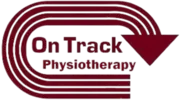What are the basic movements that someone should be proficient with to train or compete in athletics? What are some ways to address these movements in my training?
There are quite a few movements I feel are quite necessary to move well enough to keep injury risk low and to enhance speed, power, jumping ability, etc. I’ll get into all of them in time, but for now I’m going to spend more time on the ‘Big 3’ from the Functional Movement Screen.
1.Deep Overhead Squat

2.Hurdle Step

3.In-Line Lunge

These are larger patterns with many component parts but what it really comes down to is we need a great deal of mobility from certain joints and stability from others
Mobility – ankles, hips, thoracic spine, and shoulders
Stability – knees, lumbar spine (a.k.a the Core), and scapulae
As you can see from the pictures above, a great deal of mobility is required from each of those areas I listed.
This is simplifying things a bit but if you do not have the requisite mobility then there is no way you will move well in these patterns and the way you run, lift, jump, and throw will be compromised. We also know that poor mobility leads to poor ability to stabilize the joints listed above as the body searches for compensatory strategies (ways around those stiff joints).
Let’s use ankle mobility as an example. From a half kneeling position, you should be able to get your knee 4 inches past your toes while keeping the heel down. See the picture below (the stick in line with the big toe forces you to take the knee outside the stick). Full ankle mobility will allow the rest of the lower extremity to stay in great alignment while running, lifting, etc. If the ankle is stiff, the foot will pronate (flatten out) and the knee will cave inward all in an attempt to work around the ankle. All the athlete is thinking is “I have to run fast” so the brain will find a way whether it is right or wrong. Over time this leads to instability at the foot, knee, possibly even higher up the chain, and ultimately decreased performance and injury.
So if you find yourself struggling to move through the ‘Big 3’ patterns discussed above, ankle mobility should be the first place to look. So what to do if you’re short of that magic 4″ past the toes?
– self myofascial release – rolling a lacrosse ball along the bottom of the foot and foam roller/massage stick to the calf
– stretching for the calf with the knee extended (traditional calf stretch with hands on the wall) and with the knee flexed to get the soleus/Achilles (as in the picture above or standing knee to the wall)
If those just aren’t cutting it, or you experience pain in front of your ankle, then you may have some joint and/or soft tissue issues that will not be solved by just exercise. Then it’s time to see your physical therapist or chiropractor who has the ability to address these areas. Here at On Track Physical Therapy, I use techniques like IASTM and Dry Needling which have been shown to quickly improve range of motion. We then follow this up with specific exercises to build control through the newly acquired range of motion to help lock the changes in.
As with any intervention, be sure to go back and re-check the patterns when you are done. As ankle mobility improves then your squat, hurdle step, and lunge should all improve as well. Maybe not to ‘perfect’ yet because there a number of other components involved here, but definitely will have you on the right path.


